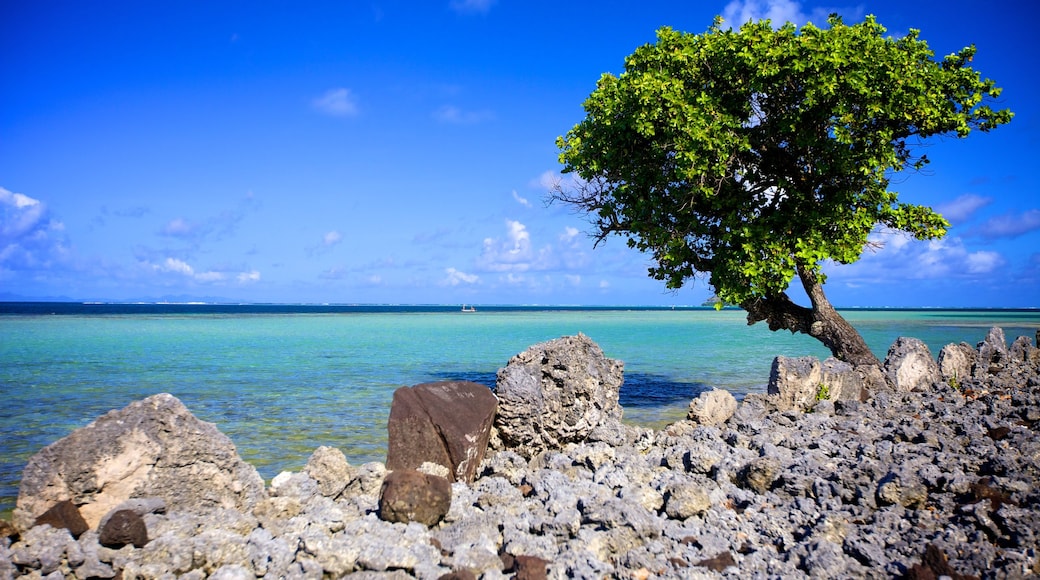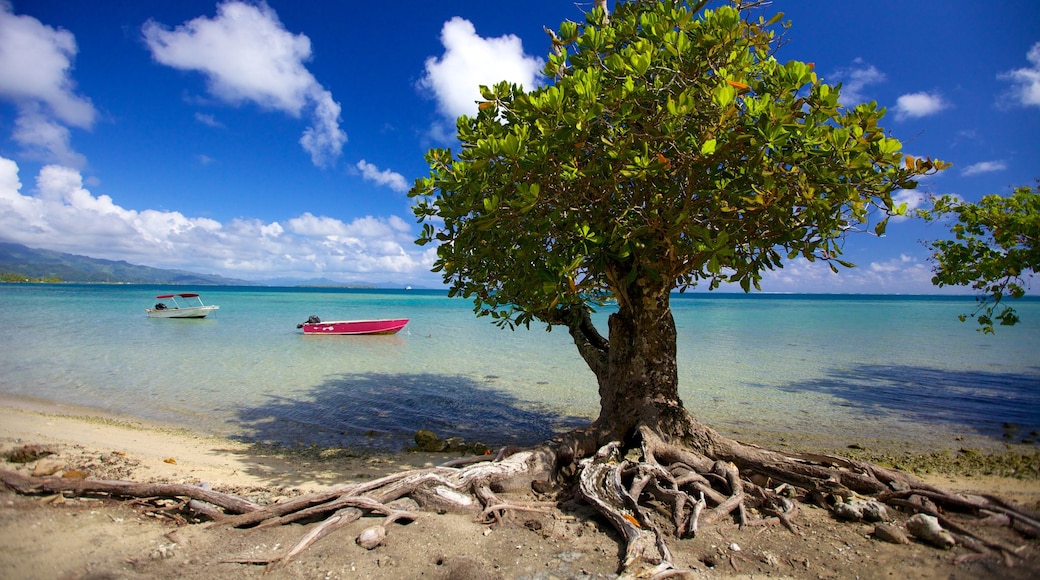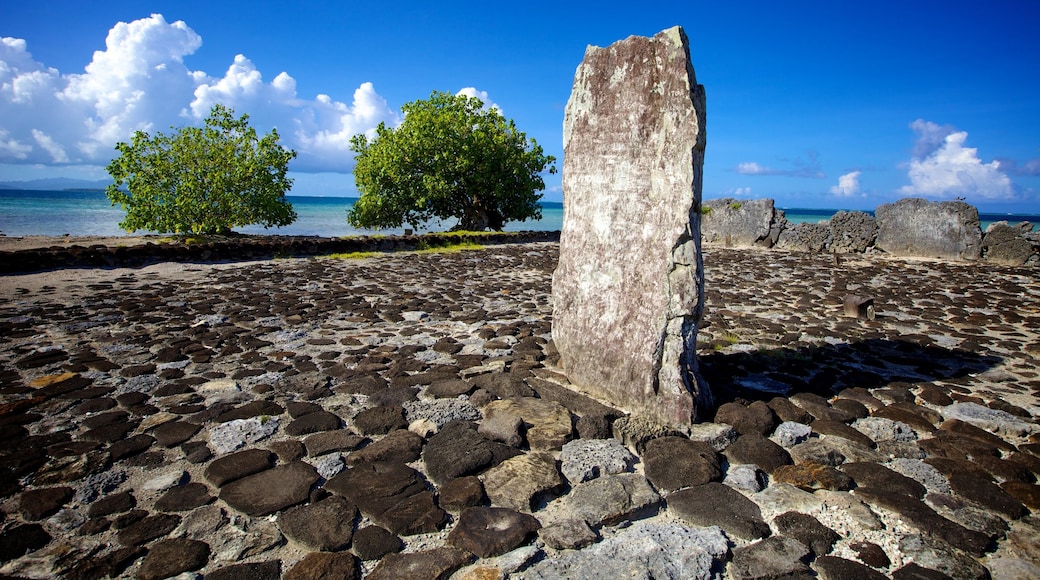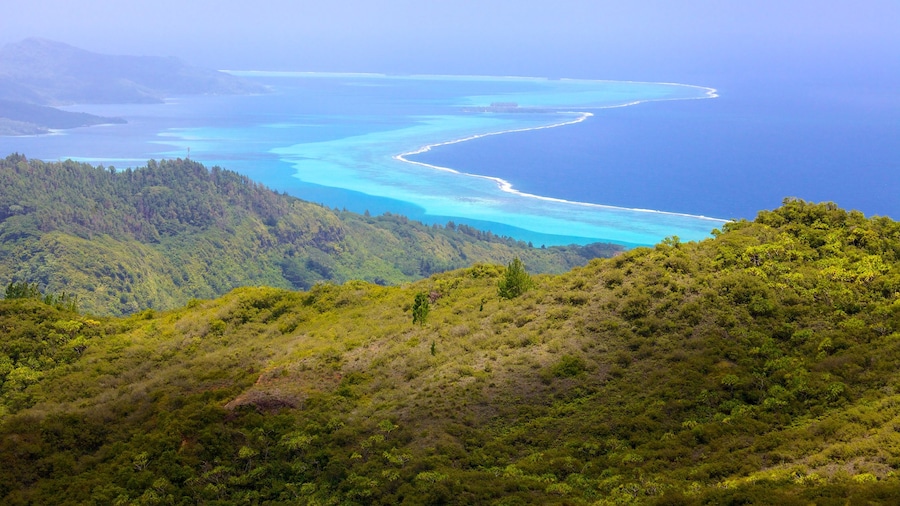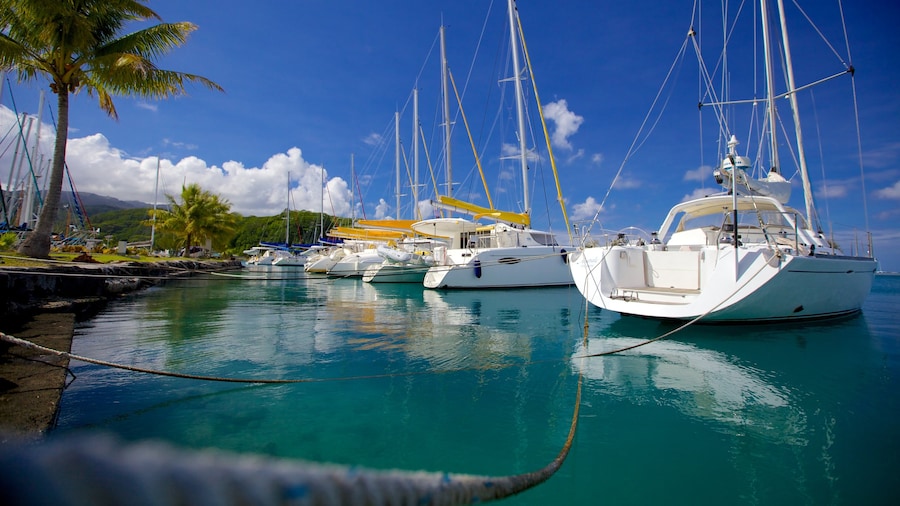Admire ancient stone carvings and wooden sculptures and enjoy the serene landscape surrounding the beautiful Marae Taputapuatea. Wander toward the marae, or meeting grounds, and take in its impressive size as it sprawls across the headland. Dated as far back as A.D. 1000, it is one of the largest outdoor temples in French Polynesia.
As you walk around this bed of charred volcanic rock, look at the small figures that have been meticulously carved out of the heavy stone. Notice the intricate features and facial expressions that have been preserved for thousands of years. The same staggering feat of preservation is true of the wood shields that rest against the outer wall. The jagged lines and shapes cut into these rectangular blocks of wood symbolize the various clans that lived on the island hundreds of years ago.
Look beyond these shields for a moment to where a single rock in the shape of an obelisk stands at the central point of the temple. This is believed to mark the spot where Oro, the Tahitian god of war, was spawned from the earth.
Even among such enthralling history it is impossible to ignore the temple’s gorgeous natural surroundings. Leafy trees shield small sections of stone from the beating sun and hang out over the ocean that washes against the temple’s eastern edge. Take a moment to wander into the thick jungle inland or sunbathe and swim from the golden beach a short distance to the west.
Marae Taputapuatea is on the southeastern coast of Raiatea, a 25-minute drive south from Uturoa. The site has no admission fee and the temple is open to visitors at any time of day. Read the signs and diagrams, some in English, that explain how the marae was built and how the Polynesian tribes would have survived here.
